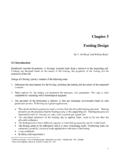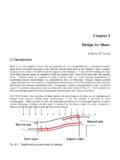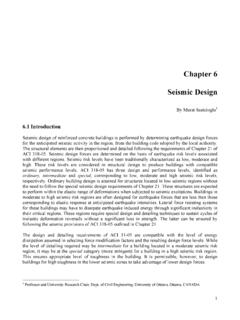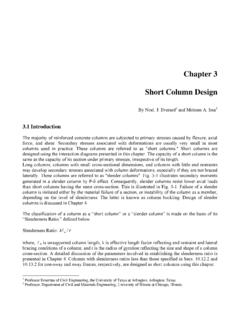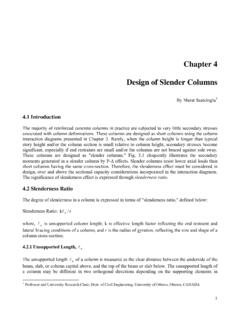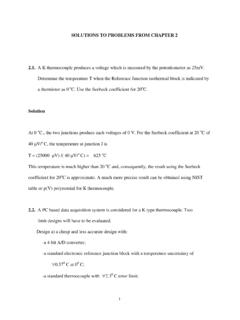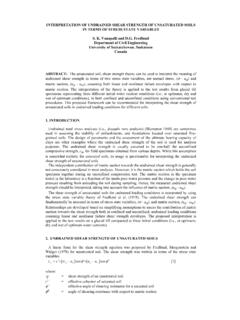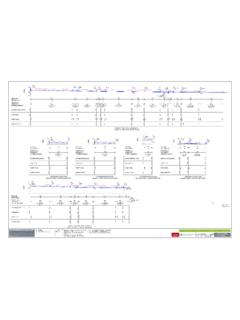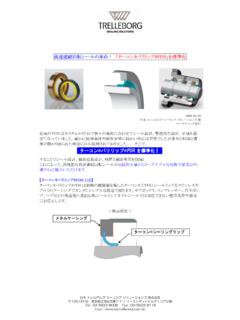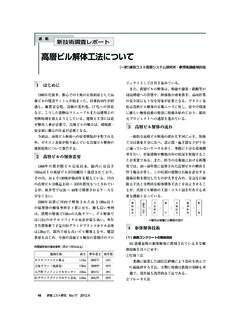Transcription of MICRO AIR - Engineering
1 Product Data 03 30 00 Cast-in-Place Concrete 03 40 00 Precast Concrete3 03 70 00 Mass ConcreteDescriptionMicro Air air-entraining admixture provides concrete with extra protection by creating air bubbles that are ultrastable, small and closely spaced a characteristic especially useful in the types of concrete known for their difficulty to entrain and maintain the air content when used at a lower dosage than standard air-entraining admixtures, MICRO Air admixture meets the requirements of ASTM C 260, AASHTO M 154, and CRD-C 13. Applications Recommended for use in:n Concrete exposed to cyclic freezing and thawingn Production of high-quality normal or lightweight concrete (heavyweight concrete normally does not contain entrained air) MICRO AIR Air-Entraining AdmixtureFeaturesn Ready-to-use in the proper concentration for rapid, accurate dispensingn Greatly improved stability of air-entrainmentn Ultra stable air bubblesBenefitsn Increased resistance to damage from cyclic freezing and thawingn Increased resistance to scaling from deicing saltsn Improved plasticity and workabilityn Improved air-void system in hardened concreten Improved ability to entrain and retain air in low-slump concrete, concrete containing high-carbon content fly ash, concrete using large amounts of fine materials, concrete using high-alkali cements, high-temperature concrete.
2 And concrete with extended mixing timesn Reduced permeability increased watertightnessn Reduced segregation and bleedingPerformance CharacteristicsConcrete durability research has established that the best protection for concrete from the adverse effects of freezing and thawing cycles and deicing salts results from: proper air content in the hardened concrete, a suitable air-void system in terms of bubble size and spacing and adequate concrete strength, assuming the use of sound aggregates and proper mixing, transporting, placing, consolidation, finishing and curing techniques. MICRO Air admixture can be used to obtain adequate freezing and thawing durability in a properly proportioned concrete mixture, if standard industry practices are Content Determination: The total air content of normal weight concrete should be measured in strict accordance with ASTM C 231, Standard Test Method for Air Content of Freshly Mixed Concrete by the Pressure Method or ASTM C 173/C 173M, Standard Test Method for Air Content of Freshly Mixed Concrete by the Volumetric Method.
3 The air content of lightweight concrete should only be determined using the Volumetric Method. The air content should be verified by calculating the gravimetric air content in accordance with ASTM C 138/C 138M, Standard Test Method for Density (Unit Weight), Yield, and Air Content (Gravimetric) of Concrete. If the total air content, as measured by the Pressure Method or Volumetric Method and as verified by the Gravimetric Method, deviates by more than 1-1/2%, the cause should be determined and corrected through equipment calibration or by whatever process is deemed for UseDosage: There is no standard dosage for MICRO Air admixture. The exact quantity of air-entraining admixture needed for a given air content of concrete varies because of differences in concrete making materials and ambient conditions.
4 Typical factors that might influence the amount of air entrained include: temperature, cementitious materials, sand gradation, sand-aggregate ratio, mixture proportions, slump, means of conveying and placement, consolidation and finishing amount of MICRO Air admixture used will depend upon the amount of entrained air required under actual job conditions. In a trial mixture, use 1/8 to 1-1/2 fl oz/cwt (8-98 mL/100 kg) of cement. In mixtures containing water-reducing or set-control admixtures, the amount of MICRO Air admixture needed is somewhat less than the amount required in plain concrete. Due to possible changes in the factors that can affect the dosage of MICRO Air admixture, frequent air content checks should be made during the course of the work. Adjustments to the dosage should be based on the amount of entrained air required in the mixture at the point of placement.
5 If an unusually high or low dosage of MICRO Air admixture is required to obtain the desired air content, consult your BASF Construction Chemicals representative. In such cases, it may be necessary to determine that, in addition to a proper air content in the fresh concrete, a suitable air-void system is achieved in the hardened and Mixing: Add MICRO Air admixture to the concrete mixture using a dispenser designed for air-entraining admixtures; or add manually using a suitable measuring device that ensures accuracy within plus or minus 3% of the required amount. For optimum, consistent performance, the air-entraining admixture should be dispensed on damp, fine aggregate or with the initial batch water. If the concrete mixture contains lightweight aggregate, field evaluations should be conducted to determine the best method to dispense the air-entraining a 2005 publication from the Portland Cement Association (PCA R&D Serial No.)
6 2789), it was reported that problematic air-void clustering that can potentially lead to above normal decreases in strength was found to coincide with late additions of water to air-entrained concretes. Late additions of water include the conventional practice of holding back water during batching for addition at the jobsite. Therefore, caution should be exercised with delayed additions to air-entrained concrete. Furthermore, an air content check should be performed after any post-batching addition to an air-entrained concrete NotesCorrosivity Non-Chloride, Non-Corrosive: MICRO Air admixture will neither initiate nor promote corrosion of reinforcing and prestressing steel embedded in concrete, or of galvanized steel floor and roof systems. No calcium chloride or other chloride-based ingredients are used in the manufacture of this : MICRO Air admixture may be used in combination with any BASF Construction Chemicals admixture, unless stated otherwise on the data sheet for the other product.
7 When used in conjunction with other admixtures, each admixture must be dispensed separately into the and HandlingStorage Temperature: MICRO Air admixture should be stored and dispensed at 35 F (2 C) or higher. Although freezing does not harm this product, precautions should be taken to protect it from freezing. If it freezes, thaw and reconstitute by mild mechanical agitation. Do not use pressurized air for Life: MICRO Air admixture has a minimum shelf life of 18 months. Depending on storage conditions, the shelf life may be greater than stated. Please contact your BASF Construction Chemicals representative regarding suitability for use and dosage recommendations if the shelf life of MICRO Air admixture has been : MICRO Air admixture is a caustic solution. Chemical goggles and gloves are recommended when transferring or handling this material.
8 (See MSDS and/or product label for complete information.) PackagingMicro Air admixture is supplied in 55 gal (208 L) drums, 275 gal (1040 L) totes and by bulk delivery. Related DocumentsMaterial Safety Data Sheets: MICRO Air InformationFor suggested specification information or for additional product data on MICRO Air admixture, contact your BASF Construction Chemicals Admixture Systems business of BASF Construction Chemicals is a leading provider of innovative additives for specialty concrete used in the ready mix, precast, manufactured concrete products, underground construction and paving markets throughout the NAFTA region. The Company s respected Master Builders brand products are used to improve the placing, pumping, finishing, appearance and performance characteristics of Data: MICRO AIR BASF Construction Chemicals, LLCA dmixture States 23700 Chagrin Boulevard, Cleveland, Ohio 44122-5544 n Tel: 800 628-9990 n Fax: 216 839-8821 Canada 1800 Clark Boulevard, Brampton, Ontario L6T 4M7 n Tel: 800 387-5862 n Fax: 905 792-0651 Construction Research & Technology GMBH BASF Construction Chemicals, LLC 2007 n Printed in USA n 03/07 n LIT # 1017034
